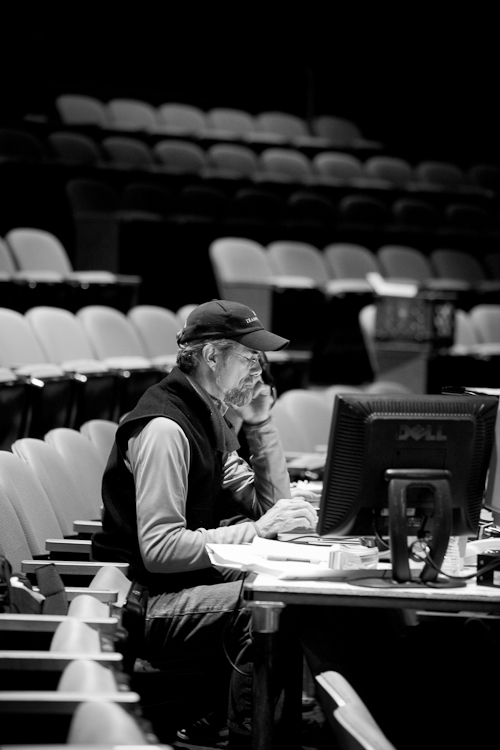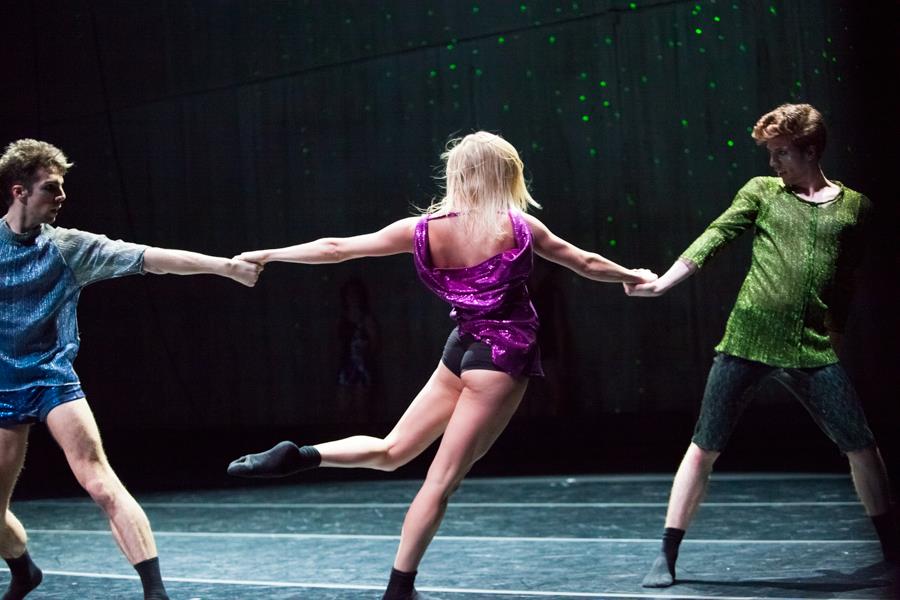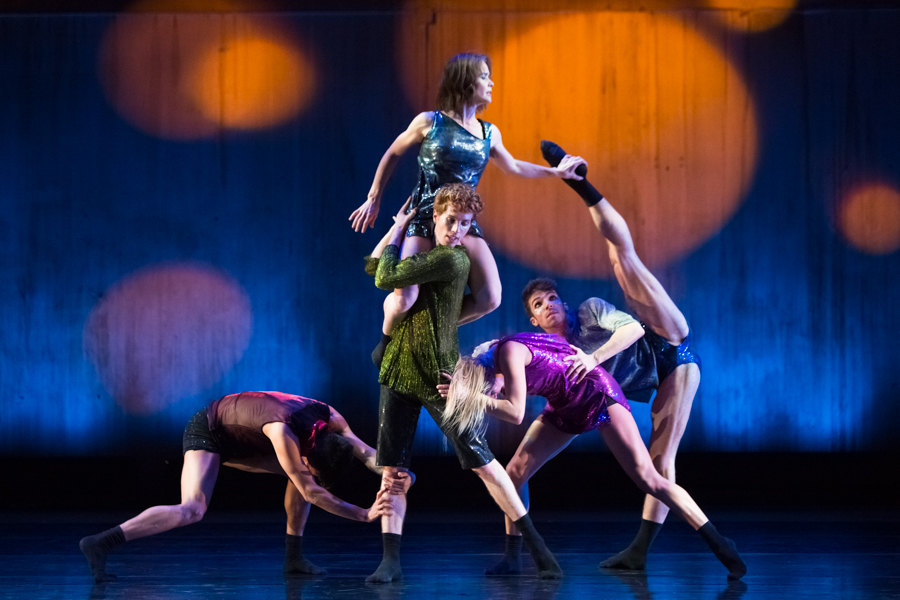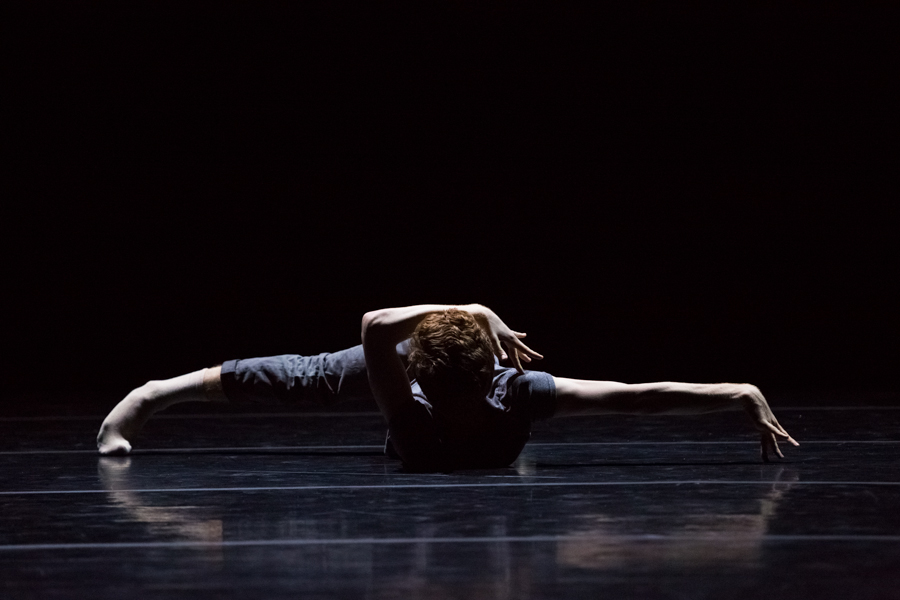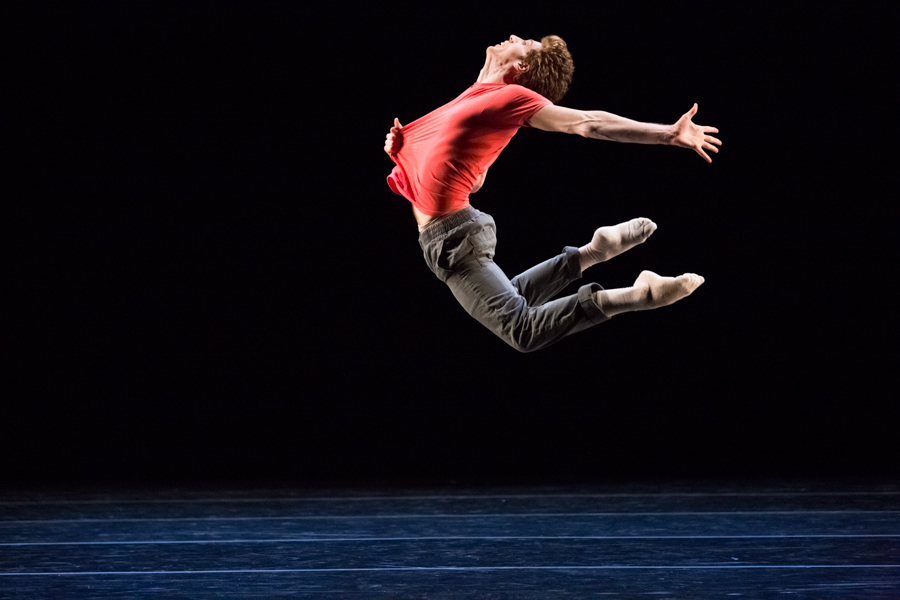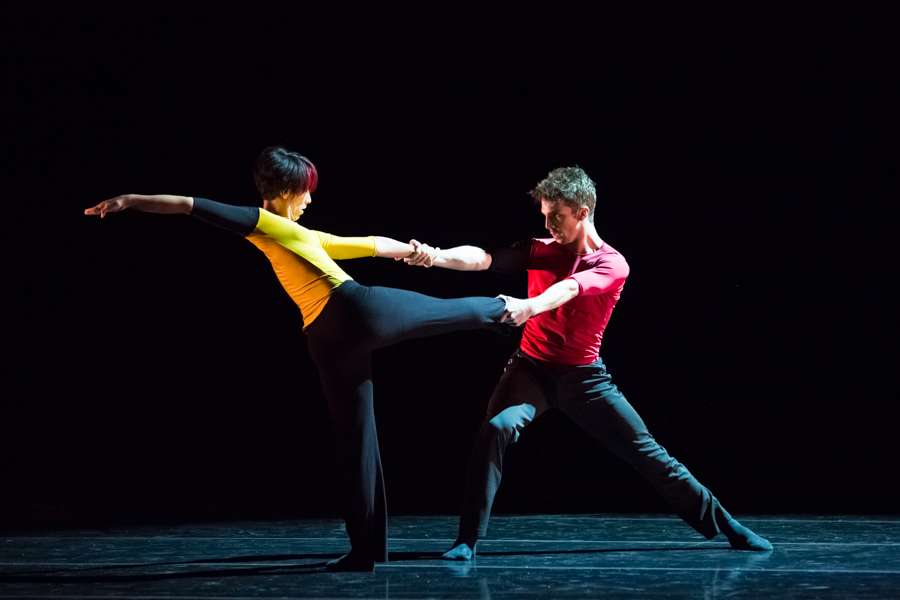In his yesterday’s Seattle Times review of CRAVE More, Michael Upchurch rightfully featured lighting. During and after both shows so far, I also heard audience members marveling at it. The Upchurch review concludes: “Michael Mazzola’s lighting design is as crucial to all four pieces as any single dancer. The things he does with shadow and light, especially in ‘Crave,’” are masterful.”
Only the first piece, CRAVE, was a premiere since it takes place at a club/rave, light is a key to its effectiveness, though Michael M’s implementation/interpretation was excellent in all four. Designed by him to the specifications of guest choreographer Annabelle Lopez Ochoa, CRAVE employs fog, moving light beams, and projections on wall and floor. The predominant lighting palette is purple and green, with some orange as well,
all clashing with the garish garments of the dancers.
The desolation evoked by this piece, for me and many with whom I spoke, is brought out and heightened by the lighting. Sequins and sweat glittered from costumes and faces in manic moments. In the bleak interludes, the tunic of Andrew, the odd man out, turned muddy olive. Yet, as Michael told me, his task was always to make the light complement the dance, never to overwhelm or submerge it. In that he succeeded splendidly.
During Whim W’Him artistic director Olivier Wever’s More, light lovingly follows the outlines of Andrew Bartee’s pretzeling body and waggling, grasping fingers. Nothing like as dramatic, it allows the piece to speak for itself. (Might the two sharp triangles of light against the back wall, not visible in these photos, have been meant to form an M-shape, for More? They do coalesce into one at the end.)
The third piece, Before After, choreographed by Annabelle and danced by her & Lucien, traces the arc of a relationship from its tentative start to its melancholy finish.
Again, I’ll quote Upchurch: “In an arena-like circle of light, to a sound-collage of voices, Ochoa and Postlewaite approach and tangle with each other. The cinching choreographic stroke is the way that arena of light keeps splitting, changing intensity or shifting off-base, as though the ground rules of the world these two inhabit are being continually rewritten.” And the end when Annabelle goes off alone, a dwindling spotlight following her brings tears…
After an intermission, we move on from the stripped bare emotions of Before After,
to the artifice of The Sofa, which could not be more different in tone.
Here the lighting, clear and even for the most part, with judicious use of spotlights, accentuates the ambience of sophisticated physical repartee set off against human passions enacted in a drawing room.
One more performance tonight January 20, 2013, 7:00 PM at the former Intiman Theatre (now Seattle Center Playhouse). For tickets: Whim W’Him | Crave More
Next up: Lucien Postlewaite—the joys & complexities of life in 2 worlds
